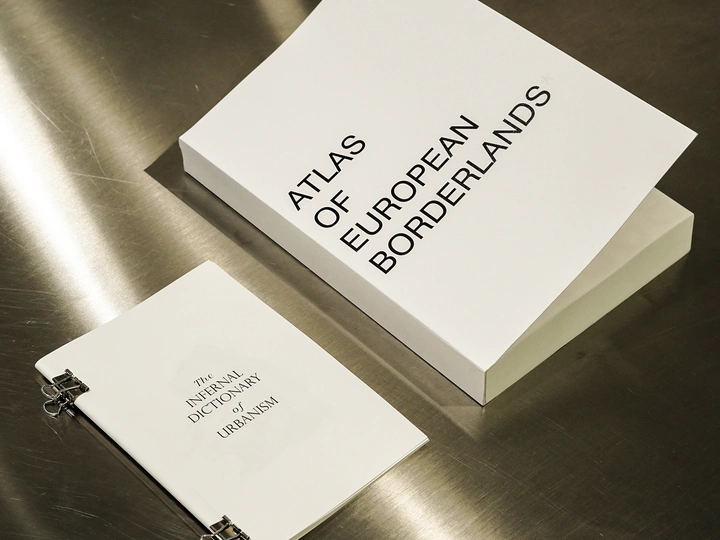The Atlas of European Borderlands

Anthè (Anthi) Pappà
Burro was founded in the digital sphere and operates from the EU Borderlands*.It is composed by Levan Dzegvelashvili (Tbilisi) and Anthè Pappà (Zurich). We have a deep interest in the geography, geopolitical and socio-cultural realities of the space called "Europe", an interest that drives our collaboration and research activities.
Anthè Pappà is an architect, urbanist, and researcher from Athens, Greece, raised in Rome. She graduated Cum Laude with a MSc in Architecture and Urban Design from the Polytechnic University of Milan. Her academic journey included programs at the University of Seville, Bartlett School of Architecture, and University of Kyoto and a diploma studio with Professors Kazuyo Sejima and Jonas Elding. Her joint Diploma project "The Atlas of European Borderlands" with Levan Dzegvelashvili, supervised by Prof. Pierre Alain Croset, received a research scholarship at ETH Zurich under Chair Tom Avermaete and graduated with Honors. After working in Milan, Amsterdam, and Stockholm, she now practices at HosoyaSchaefer Architects in Zurich while continuing her research pursuits.
Levan Dzegvelashvili is an architect based in Tbilisi, Georgia, with over five years of experience in architectural design, focused on buildings and technical solutions. He earned his BA degree in Architecture from the Georgian Technical University in Tbilisi. While studying he worked at MUA – Multiverse Architecture. He pursued a MA degree at Politecnico di Milano, supported by a government scholarship. He participated in international workshops;the Travelling Conference SC FutUre: South Caucasus Urban Futures and Act|Up, Activating Urban Periphery in Eastern Europe. His thesis, with Anthe Pappa, Atlas of European Borderlands was awarded a scholarship at ETH Zurich. It was supervised by Prof. Croset and co-supervised by Dr. Avermaete. He completed an internship at EldingOscarson Architects in Stockholm. He received his MSc degree in Architecture from Politecnico di Milano.
Between urban/rural, centrality/periphery, stands a third landscape. Often overlooked, but essential in urban ecology,it's characterised by rubbish tips, warehouses, superstores, industrial plants, data centers,office parks, motorways and fragmented farmland.These Borderlands are historically territories of social exclusion and resource extraction. Our book "The Atlas of European Borderlands" explores these spaces, typically absent from conventional maps. It provides an anthology of Borderscapes across three scales:urban centres and surroundings,territories between nation-states and continental boundaries. The focus is continental Europe exploring its liquid geographical, political, sociological, and cultural borders. Using Histoire croisee methodology, we define Borderlands spatially and ontologically, uncovering the palimpsest of these transient non-spaces through ethnography, cartography, philosophy, border studies and urban theory. We explore these-scapes through visual arts using post-war cinema as a narrational tool to visualize sociological and political substrata,guiding urban change.We focus on ethnography through a Microhistorical lense. We examine scenarios that challenge ideas of centrality, highlighting liminal bodies and artefacts in transitional areas. Within this dynamic interplay, we uncover a symbiotic relationship; in the absence of liminality, a core loses its identity, and the absence of a centrality renders liminalities conceptually void. Among our case studies, the Borderlands of the Caucasus, as the "limits" of Europe are studied and those of Basel are field researched. The latter represents a blueprint for European crossborder territorial integration. This is critical for resource transition in the complex context of continental Europe, to ensure peaceful territorial growth. Thus, the question of borders becomes prominent, as differences crystallise in light of the current geopolitical liquidity become particularly relevant.